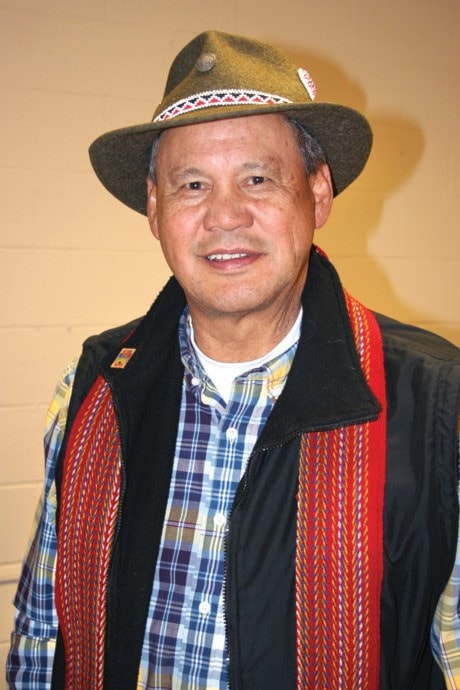In British Columbia, roughly 60,000 residents self-identify as Métis, according to census information.
Far fewer hold registered citizenship cards with the Métis Nation of B.C., a provincial section of the Métis National Council.
That number is expected to rise soon, after the Supreme Court that ruled Canada’s estimated 200,000 Métis and 400,000 non-status Indians are indeed “Indians” under the Constitution Act and therefore, fall under federal jurisdiction.
Abbotsford-based Métis Nation has issued about 8,000 citizenship cards since it began the process in 2005, including about 500 in Greater Victoria.
In the first week following the January court decision, their office received about 1,400 phone calls and emails from people inquiring about officially registering their heritage.
“We’ve mailed out about 500 information packages,” said Laurel Katernick, director of registry for Métis Nation.
The standard of living for Métis people in Greater Victoria runs the spectrum, from poverty to relative affluence, not unlike the non-aboriginal community.
The majority don’t hunt or fish for sustenance, or try to secure the right to cut and sell timber off Crown lands.
“I think (Métis) people living here in Victoria are probably around average for the most part,” said Bruce Dumont, president of Métis Nation of B.C. and a resident of Highlands. “If you take into account the aggregation, you would see we’re average by social standards.”
At the same time, he said, many Métis in B.C. and Canada do not have health care, are under-educated or live in inappropriate housing.
In his judgment, Justice Michael Phelan wrote, “The recognition of Métis and non-status Indians as Indians under section 91(24) should accord a further level of respect and reconciliation by removing the constitutional uncertainty surrounding these groups.”
While there has been much speculation over the potential cost of placing 600,000 more people under the responsibility of Aboriginal Affairs and Northern Development Canada, Phelan’s judgment did not lay out any specific terms of added financial responsibility.
The federal government currently provides funding for provincial and national organizations representing Metis and non-status Indians and the programs they run, but not for individuals or communities.
“It’s a common fear that it’s going to cost the government a lot of money,” Dumont said.
“I think that’s way ballooned out of proportion. You’re not going to have to support us, we’re very independent.”
He foresees positive effects flowing from the decision, despite the fact the government is widely expected to appeal the ruling.
“I can see the benefits happening a few years down the road, but it’s premature to say. We waited this long, we can wait a couple more years. I’m excited for the whole thing and excited for our people.”
The significance of the ruling to him is in the potential for negotiating a more defined right to hunt and fish for sustenance – similar to rights outlined in First Nations treaties – and enhancing educational opportunities.
Paul Lacerte, executive director of the B.C. Association of Native Friendship Centres in Victoria, sees Phelan’s lack of direction to the federal government in his decision as rather favourable to the aboriginal community, since it opens the door for negotiations on a range of issues.
The timing of the decision alongside the Idle No More movement, which aims to halt what it calls “the erosion of treaty and indigenous rights,” is a sign that the playing field and the role of aboriginal people in Canada are starting to be redefined, Lacerte said.
“My hope is that all of this leads to poverty reduction and strength building,” he said.
People comprising the two aboriginal groups are frequently caught in a kind of jurisdictional no-man’s land, with the provinces and the federal government deferring responsibility to the other in terms of program delivery.
While the implications, financial or otherwise, of Phelan’s judgment may not be known for some time, Dumont appreciates the fact that Métis and non-status Indian people have achieved at least this level of recognition.
“It’s a huge step forward,” he said. “There’s a lot of excitement generated for finally being recognized.”
editor@vicnews.com
Who is aboriginal?
• The Constitution Act of 1982 defines aboriginal peoples as “including the Indian, Inuit and Métis peoples of Canada.”
• Aboriginal Affairs and Northern Development Canada defines the term “Indian” as an individual or groups in one of those three categories. It also states, “Indians in Canada are often referred to as: Status Indians, non-Status Indians and Treaty Indians.”
• Métis peoples are individuals with mixed aboriginal and European heritage who can trace their familial routes back to original Métis settlements in Central Canada, primarily in Manitoba and Saskatchewan.
